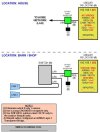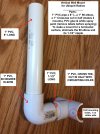I'm hoping this is an easy question to answer...
I have BI running on an HP Envy tower with Win 11. Widows has all the latest updates
I have a couple cameras in remote areas that are attached to a Netgear R6400 running native FW (read not dd-wrt) and it seems to be working OK, but not great, FPS varies a lot.
The router is too far away to justify the expense and hassle of underground ethernet cable.
The dd-wrt website has some great information about converting the Netgear router so I'm considering it, but I don't think it will solve my issue.
The netgear is broadcasting a 5Ghz signal, and the HP Envy wireless is attaching to it. All devices involved are manual IP no dhcp.
The question I have is how to I convince the HP Envy win11 to reconnect to the wireless on a reboot? I have the HP Envy set to restart on power failure and have checked the box in the wireless area to "automatically connect when in range".
I've set the power requirements of the wireless to be always on.
I'm open for all ideas. Thanks for your time in replying.
I have BI running on an HP Envy tower with Win 11. Widows has all the latest updates
I have a couple cameras in remote areas that are attached to a Netgear R6400 running native FW (read not dd-wrt) and it seems to be working OK, but not great, FPS varies a lot.
The router is too far away to justify the expense and hassle of underground ethernet cable.
The dd-wrt website has some great information about converting the Netgear router so I'm considering it, but I don't think it will solve my issue.
The netgear is broadcasting a 5Ghz signal, and the HP Envy wireless is attaching to it. All devices involved are manual IP no dhcp.
The question I have is how to I convince the HP Envy win11 to reconnect to the wireless on a reboot? I have the HP Envy set to restart on power failure and have checked the box in the wireless area to "automatically connect when in range".
I've set the power requirements of the wireless to be always on.
I'm open for all ideas. Thanks for your time in replying.





